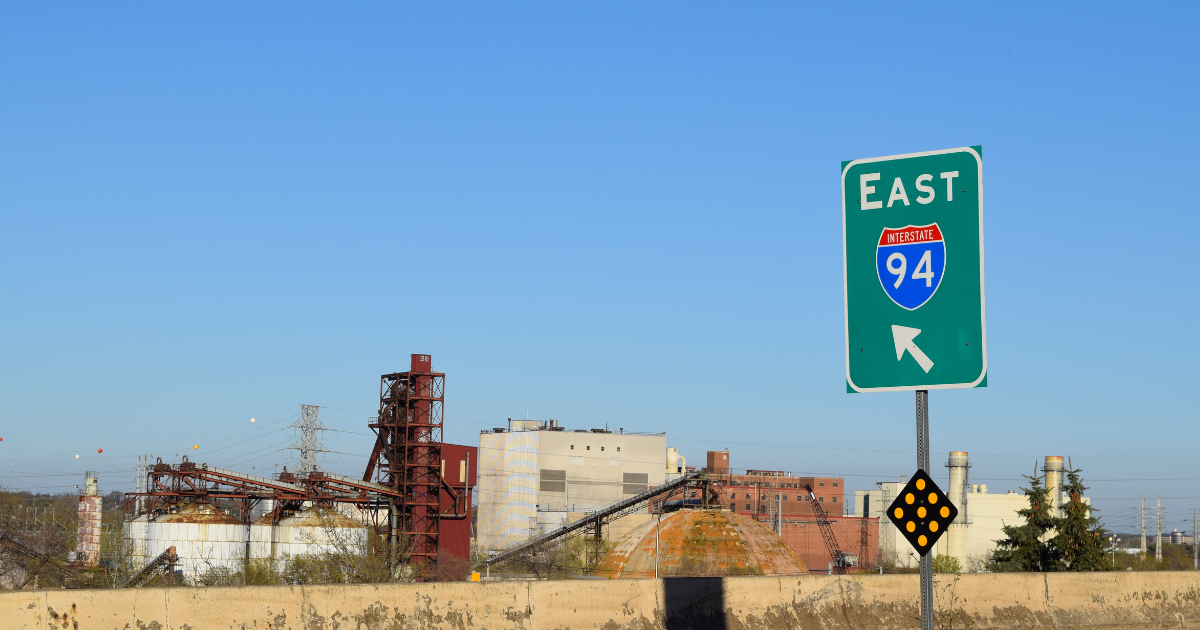The Injustice of Urban Highways—and the Path Forward
Cities across the country are grappling with the damage that decades of highway-centric planning have brought–especially to Black, brown, and Native communities. The Twin Cities are no exception. What will it take to disrupt this pattern of harm and disinvestment and instead restore racial, economic, and environmental justice to our metro communities?
A recent event hosted by our national partners at Transportation for America brought together leaders from around the U.S. who are taking strides to undo the damage of urban highways. Collectively, they show both how pervasive this problem is—and a growing support for looking beyond the expediency of car travel to put people and communities back at the center of transportation decision-making.
Highways’ Harmful Legacy Familiar in Cities Nationwide
From one city to the next, the stories about our highways’ unjust and environmentally destructive past and present are stunningly interchangeable. In many ways, listening to these speakers, Atlanta could be Houston or New Orleans, New Orleans could be Syracuse or Saint Paul—and on and on.
U.S. Representative Nikema Williams from Georgia shared, “Atlanta is a prime example of displacement with the building of Interstates 75, 85 and I-20 straight through the middle of Atlanta which was a predominantly black neighborhood and community in the 1950s. Once those highways were built, homes, schools, churches, community spaces were all demolished. And in exchange, these communities received congestion, pollution, and low air quality.”
Syracuse, New York’s history was similar said Mayor Ben Walsh, “They brought 81 directly through the heart of the City of Syracuse. For us the neighborhood was the old 15th Ward. Again, a predominantly black and brown neighborhood completely uprooted, people displaced. And we’ve had to live with the racist legacy of that highway ever since.”
And, of course, many Twin Cities residents know this drill all too well. Keith Baker, Executive Director of ReConnect Rondo, recounted that families in Saint Paul’s Rondo neighborhood lost 700 homes, 300 businesses, and millions in generational wealth when I-94 ripped through their community: “There was a very, very intentional decision made here. . . . There was an intentional decision—even though there were less houses that were going to be taken out and it was more industrial [with the alternative Northern route]—there was a decision to take it right through Rondo. This is where 80 percent of the African American community lived in the City of Saint Paul and it was a growing middle-class community as well.”
City Leaders and Advocates Work to Reconnect Their Communities
Recognizing that problems with urban highways don’t start and end with their decades-old construction, advocates nationwide are pushing back on the status quo and reimagining the future of our cities.
In some cases, communities are still forced to fight new highway expansion. In Houston, advocates mobilizing against an expansion of I-45 say the project will impact tens of thousands of people and displace over 1,000 homes, over 300 businesses, 2 schools, and 5 places of worship. “Not surprisingly, the freeways separate us. The freeways divide us by race. The freeways divide us by class,” Molly Cook with Stop TxDOT I-45 affirmed, while emphasizing that, “By coming together, the advocacy groups have managed to make a real difference.”
Other communities are able to put their energy toward restoration. The proposed solutions are taking many forms, from better transit connections to highway removal.
“So much of our decisions and our assumptions that we make about [transportation] projects are solely based on people traveling in cars. We need to be focused on multimodal solutions,” underscored Walsh in Syracuse.
Cities from Milwaukee, Wisconsin to Seoul, South Korea have taken steps to remove some of their urban highways altogether, in favor of surface streets connected to the street grid. Amy Stelly with Claiborne Avenue Alliance in New Orleans is hoping her city will follow suit. Stelly spoke to the community’s local push toward highway removal and equity, also noting the harmful “race-based rhetoric” and false narrative that “white people have been impacted the same” that they’re hearing in response.
Some cities like Seattle, Washington are opting for highway caps to reconnect their communities. The Rondo Land Bridge that ReConnect Rondo envisions would take a similar approach to capping I-94 in Saint Paul, with the creation of a new African American cultural enterprise district connected by a community land bridge. Built over the highway trench that exists today, the land bridge would stretch for several blocks, from Lexington Avenue to Rice Street. “We can see the potential of 15 to 21 acres over the freeway,” said Baker. “When you invest in communities and you invest in people you can in fact measure success and the elevation for people’s lives across the board.”
Opportunities for Change in the Twin Cities
Here in the Twin Cities, many of the decisions about how our highways have and will continue to impact us lie with the Minnesota Legislature and the Minnesota Department of Transportation. There are big opportunities to create change in both places.
For decades, funding and policy decisions at the Minnesota Legislature have prioritized roads and highways. This year, the House passed a strong bill that invests roughly $290M in transit, bicycling, walking, and rolling in the metro area per year, plus a $6.2M grant to develop the Rondo Land Bridge. The bill’s positive policy changes will also make our transportation system more sustainable. These include setting a goal to reduce statewide vehicle miles traveled by 20 percent, prioritizing fixing our existing road infrastructure over expansion, and requiring that electric buses be used to serve areas with the worst air pollution—often communities of color and low-income communities in no small part due to the way highways and roads have been built in these communities. Take action here to show support!
In addition to pushing for these important changes, Move Minnesota continues to advocate for using some of our state’s ample highway funds to expand highway bus rapid transit service in the metro area.
The Minnesota Department of Transportation’s Rethinking I-94 project will also be a watershed moment for the Twin Cities. The agency’s plan to reconstruct I-94 between downtown Saint Paul and downtown Minneapolis presents a critical opportunity to address the negative community impacts caused by the construction of the highway and to reduce the climate pollution threatening us all. This planning process is still underway.
In addition to firmly rejecting any highway lane expansion, Move Minnesota and allied groups are advocating for an I-94 reconstruction that advances racial equity, protects our climate and health, and prioritizes fast, frequent, and connected public transit.
Currently, MnDOT’s Policy Advisory Committee (PAC) is reviewing a draft Purpose and Needs Statement for this project. As planning continues and key planning documents are finalized, it is important they reflect the vision of the community for reimagining this corridor and reflect MnDOT’s recent goal to reduce vehicle miles traveled in Minnesota. Watch for future opportunities for public review and comment! If the Purpose and Needs Statement reflects goals from projects of the past, we will not be rethinking, or reimagining, a corridor that puts people first.
These decisions will impact the lives of people in surrounding neighborhoods for many decades. We encourage community members, and especially residents living along the I-94 corridor in Saint Paul and Minneapolis, to get involved! Speak up at the next PAC meeting on June 11, 10 AM – 12 PM. Meeting details and speaker sign-up will be published here as the meeting approaches.

